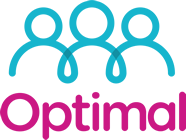It’s one of the key responsibilities of a people manager: assessing performance. And with many an employee’s success dependent on a performance measurement, it’s important to get it right.
Why bother? Put simply, without a robust system in place for assessing your staff, it’s unlikely your organisation will operate at its best. Remember, a salary alone is not enough to gain the most from your teams – sure, it helps individuals to settle the bills each month but what happens when it comes to promotions or a pay increase? If you’re not measuring staff performance, you’re not putting yourself in an optimum position to have meaningful conversations with your teams, or giving individuals an opportunity to improve and progress their career.
So, how do you best measure your employees’ performance? There are several ways to do so and today, we’re taking a look at three that have become commonplace for many organisations globally to give those of you lacking a performance measurement strategy some ideas on how to drive your teams forward.
Competency Frameworks
Competencies measure the behaviours and skills of an individual at work. A competency framework provides clarity about how an employee is expected to behave within the company and in their role, as well as the skills necessary to perform their position effectively.
Whether it’s a business owner, HR specialist or senior manager developing the framework, it is the employer’s responsibility to create one that works in practice. In other words, it needs to be extremely clear as to what each competency is and how it will be measured so that your employees know exactly what they are working toward or need to show you to meet the metric. For maximum impact, it’s a good idea to restrict the number of competencies on your framework to just a few – we would suggest ten at the most. You may wish to include a mix of competency type – for example, one or two core competencies that support the company vision, five job-specific competencies, and a handful of leadership competencies to assist with career progression and optimising talent.
If you’re creating a framework for the first time, check out the CIPD website for some useful tips on how to make yours a success.
360-degree review
As it might sound, this type of review system considers information from the wider area and provides a full 360-degree vision of an employee’s performance as seen by their peers and staff from other departments. It can be extremely beneficial, with the information provided helps you to form a picture of how your employee operates while they’re away from the activities you see as their manager.
Again, it is important to keep any questions included in a 360-degree survey to a minimum and also, to make it clear to the respondents exactly what it is you want to obtain from them. Stick to clear and measurable questioning techniques where you can – including grade scales, for example. While it might be tempting to throw in a few open questions, which are an effective means to retrieving broader feedback, try to link these to a measured question to avoid respondents straying from the point. For example, a 1-10 graded answer to the question ‘How well do you feel your colleague contributes ideas in team meetings?’ could be followed with ‘In a few words or sentences, please explain the reason for your grading’.
Self-evaluation
While management and HR have their objectives to meet, it’s important to remember your staff have their own needs to meet and many would say ‘feeling valued’ ranks much higher nowadays on their list of employment must-haves. Self-evaluation is a great way to give your employees a chance to have their say in terms of their performance, at the same time, providing each one with a sense of value.
Now, on its own, self-assessment might not be the most effective way to measure an employee’s performance although when used alongside a competency framework and 360-degree evaluation, it can be an extremely effective tool, often providing you with insights you would otherwise have missed. Once you know how your employee feels about their performance, it can be used alongside the information gathered from your other reviews to make a deeper assessment of their current ability, helping you to shape a plan to help them improve as required.
Whatever mechanism you choose to adopt for performance measurement, remember it is much more effective when done consistently and at regular intervals throughout the year. An annual appraisal is OK; quarterly catch-ups provide much more insight and in turn, success. Which ensures better outcomes for your employee and you, the manager.
In need of some HR advice? Wherever you are in the UK, you can arrange a chat with one of our friendly professional HR advisors at any time.
Call us on 0330 0881857 or email enquiries@optimal-hr.co.uk
We’re also on Facebook, Twitter, Instagram and Linked In!



